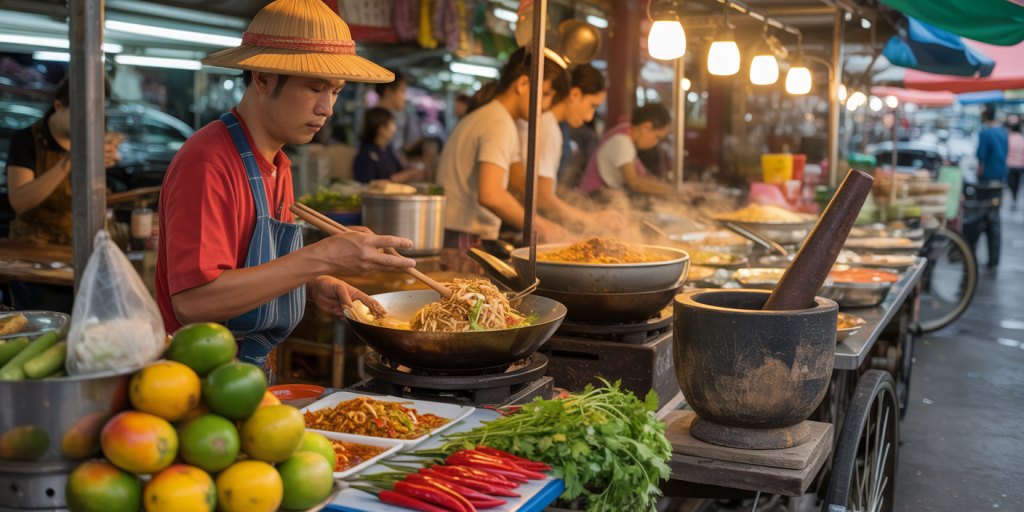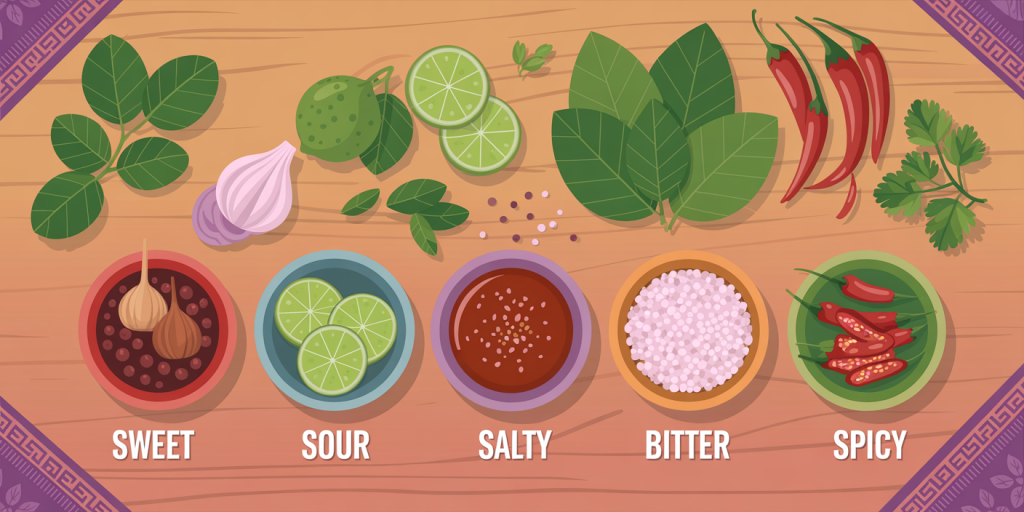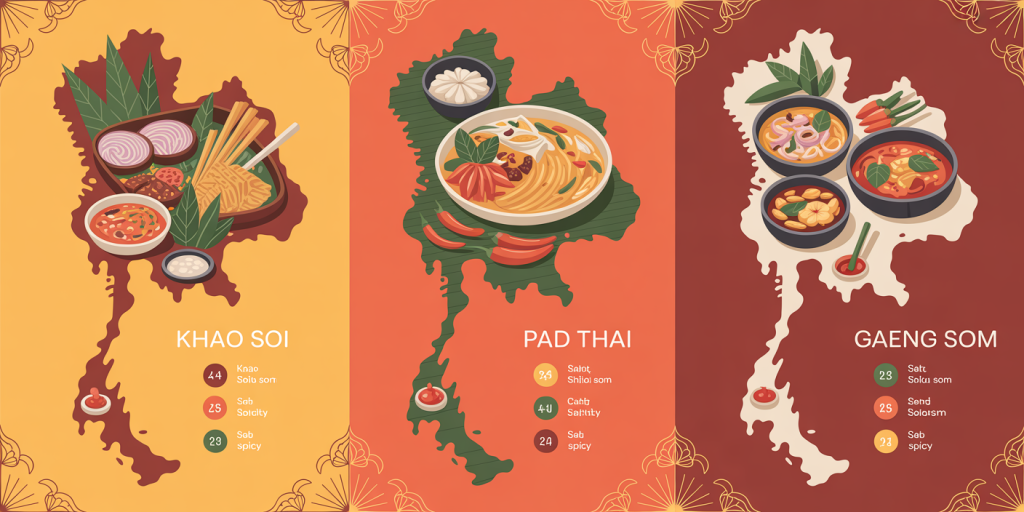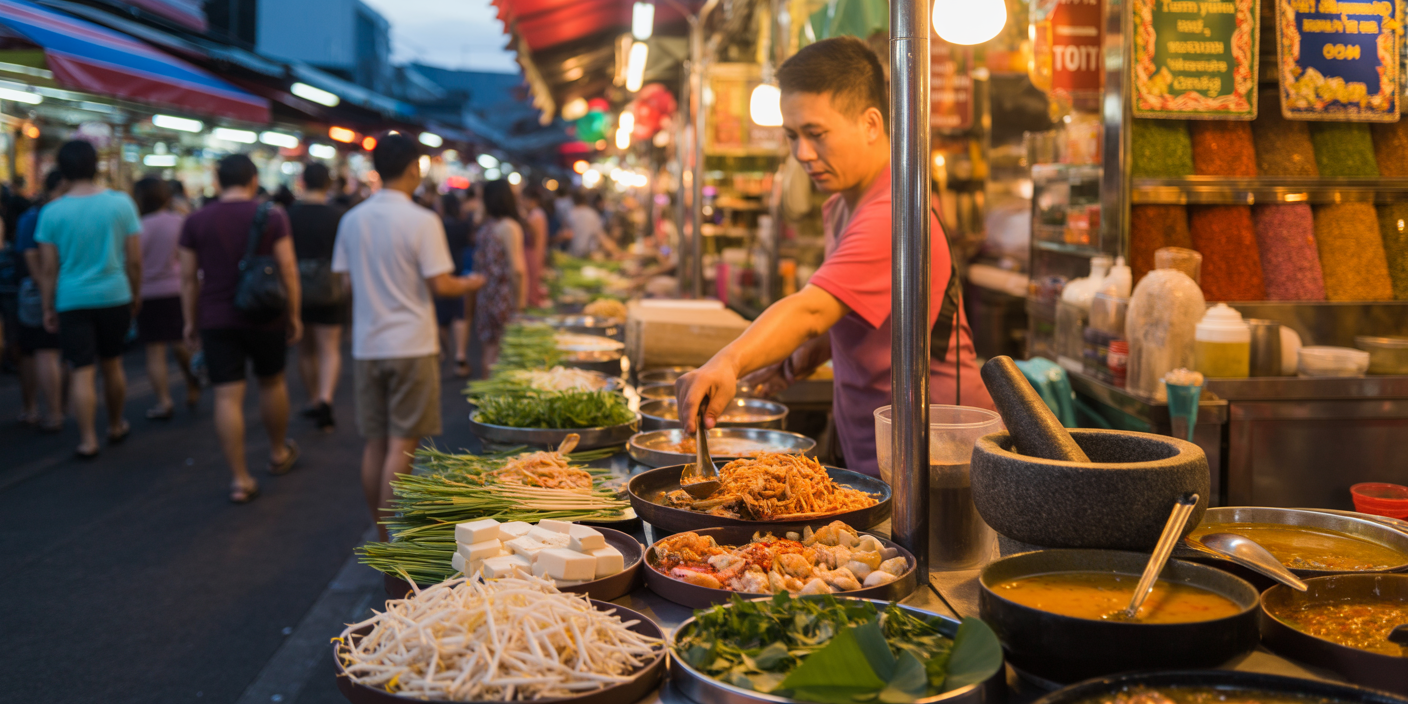Thai cuisine is globally celebrated for its vibrant flavors, rich aromas, and intricate balance of tastes such as sweet, sour, salty, bitter, and spicy. Its unique culinary heritage blends fresh ingredients, aromatic herbs, and traditional preparation techniques that offer a diverse range of dishes, each bursting with complexity and depth. In Thailand, food is more than sustenance—it is an integral part of culture, social interaction, and identity. Understanding flavor-packed Thai dishes provides insight into a cuisine that has captivated food lovers worldwide.

The international popularity of Thai food is substantiated by a 2023 survey from GlobalData, which ranked Thailand among the top five most sought-after culinary destinations, owing largely to dishes known for their freshness and intense, well-rounded flavors. From street food stalls to gourmet restaurants, the emphasis remains on harmony and vibrancy. This article delves into the fundamental characteristics, classic dishes, regional differences, and evolving trends in Thai cuisine, enriched with examples and comparative data.

The Fundamentals of Thai Flavor Profiles
A hallmark of Thai cuisine is the delicate balance among five essential flavors: sweet, sour, salty, bitter, and spicy. This balance is achieved by combining ingredients such as palm sugar, lime juice, fish sauce, herbs like kaffir lime leaves and Thai basil, and varying degrees of chili heat.

For example, in the iconic Tom Yum Goong (spicy shrimp soup), the sourness comes from fresh lime juice and lemongrass; the heat is added by fresh bird’s eye chilies; salty notes come from fish sauce; and sweetness is subtle, often from sugar or natural sweetness of fresh shrimp. The interplay of these flavors creates a sensory experience that is complex yet balanced.
Research published in the *Journal of Ethnic Foods* (2022) highlights that the use of umami-rich fish sauce and fermented shrimp paste significantly enhances Thai dishes’ savory depth, making them flavor-packed but not overpowering. This balance of tastes is what distinguishes Thai cuisine from other Southeast Asian culinary styles, such as Vietnamese or Malaysian, which might emphasize sweetness or pungency more heavily.
Signature Thai Dishes and Their Characteristics
Pad Thai: A Global Favorite
Pad Thai exemplifies Thailand’s ability to harmonize flavors into a delicious and satisfying street food. This stir-fried rice noodle dish combines tamarind pulp (sour), palm sugar (sweet), fish sauce (salty), dried shrimp (umami), and crushed peanuts (texture and nuttiness). Typical ingredients also include fresh shrimp or tofu, bean sprouts, and garlic chives.
A practical example is the widespread availability of Pad Thai in international cities like New York and London, where millions enjoy it annually. According to a 2021 culinary market analysis by Statista, Pad Thai was among the top three Thai dishes ordered in Western countries, indicating its appeal across diverse palates.
Green Curry: The Creamy Heat of Thailand
Another famous dish, Gaeng Keow Wan (Green Curry), showcases Thai mastery in blending coconut milk’s creaminess with green chilies’ intense heat, fresh herbs, and kaffir lime leaves. The dish typically combines chicken, eggplants, bamboo shoots, Thai basil, and fish sauce, resulting in a rich, aromatic bowl.
Studies by the Food and Agriculture Organization (FAO) point out that coconut milk in Thai curries provides essential medium-chain triglycerides (MCTs), contributing to both flavor and nutritional value. Green curry’s popularity skyrocketed due to its aromatic yet creamy texture, offering a milder alternative to other curries without compromising on flavor complexity.
Regional Variations in Thai Cuisine
Thailand’s regional cuisines reflect geographic, cultural, and climatic differences that influence flavor profiles and ingredients.
Northern Cuisine: Subtle and Herbal
The northern region features dishes that are less spicy but rich in herbal aromas, such as Khao Soi, a coconut curry noodle soup with pickled mustard greens and crispy egg noodles. It combines mild coconut richness with fermented ingredients’ tanginess, demonstrating unique regional flavor packing.
Southern Cuisine: Bold and Spicy
Conversely, southern Thai dishes often prioritize spice and strong flavors, frequently using turmeric, chili paste, and sour ingredients like tamarind. The dish Gaeng Som (sour curry) is exemplary, offering a bold combination of sour, spicy, and salty flavors. The southern palate tends toward fiery heat levels, attracting those who prefer sharp, intense tastes.
| Region | Characteristics | Example Dish | Heat Level (Scale 1-10) |
|---|---|---|---|
| Northern | Mild spice, herbal and sour | Khao Soi | 3 |
| Central | Balanced flavors, moderate spice | Pad Thai | 5 |
| Southern | Bold, spicy, sour-heavy | Gaeng Som | 8 |
(Table: Comparative flavor profiles by Thai region)
This table highlights the diversity even within one national cuisine, explaining how Thai dishes cater to a wide audience, from mild eaters to chili enthusiasts.
Mastering Fresh Ingredients and Preparation Techniques
Freshness is paramount in flavor-packed Thai dishes. Ingredients such as lemongrass, galangal, kaffir lime leaves, and fresh chilies provide essential aroma and flavor components. Preparation methods like pounding herbs into pastes preserve essential oils, contributing to authentic taste.
The use of mortar and pestle, a kitchen staple in Thai cooking, enables efficient blending of spices and herbs, releasing intense flavors that packaged pastes cannot replicate fully. For example, the preparation of Nam Prik (chili dips) requires pounding fresh chilies, garlic, and shrimp paste together, delivering a fiery, pungent flavor profile.
A practical case is observed in Bangkok’s street markets where vendors prepare curries manually, offering potent flavors compared to mass-produced versions found abroad. This underlines the value of preparation technique on flavor intensity and authenticity.
The Role of Balance and Presentation in Thai Dining
Thai dishes emphasize not only flavor harmony but also visual and textural balance. Plates typically combine crunchy, soft, creamy, and crisp elements. For example, Som Tum (green papaya salad) blends crunchy papaya, chewy dried shrimp, soft tomato, and nutty peanuts, combined with a tangy dressing.
Additionally, Thai dining culture promotes sharing multiple dishes to create a balanced meal experience. This practice enables diners to enjoy contrasting textures and flavors simultaneously—a spicy curry might be balanced by a cooling rice soup (Jok), or a sweet dessert like mango sticky rice can offset fiery main courses.
According to a 2023 report by Thai Tourism Authority, the communal dining style strongly enhances diners’ appreciation of complex Thai flavors, increasing the perceived satisfaction of meals by up to 40%.
Contemporary Innovations and Future Perspectives in Thai Cuisine
The global proliferation of Thai food has inspired chefs to reinterpret traditional dishes through modern techniques and ingredient substitutions while maintaining core flavor principles.
For instance, plant-based versions of classic dishes are emerging due to increasing vegan trends. Restaurants in Bangkok and Western countries creatively use jackfruit in Pad Thai or substitute tofu for meat in Green Curry, preserving essential tastes but aligning with modern dietary preferences.
Research led by the Culinary Institute of America (2024) forecasts that Thai cuisine will continue to expand internationally, emphasizing sustainability and health-conscious ingredients without sacrificing flavor. The report estimates a 15% annual growth in plant-forward Thai restaurant openings worldwide.
Moreover, digital technology and AI-assisted cooking tools are emerging, helping home cooks replicate authentic Thai flavors with step-by-step recipe guidance, ingredient substitution tips, and flavor-balancing suggestions. These innovations democratize Thai cooking knowledge, encouraging more global citizens to appreciate the complexity and richness of this dynamic cuisine.
—
By understanding the layered flavors, regional distinctions, and contemporary adaptations of Thai dishes, one appreciates why Thai cuisine remains a cornerstone of international gastronomy. The continuous evolution driven by cultural pride and culinary curiosity is likely to keep flavor-packed Thai dishes at the forefront of global food trends for years to come.

Deixe um comentário